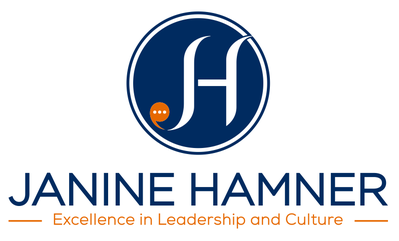
Is there a disconnect between your business and personal life? Have you been searching for the fundamentals of running a business with a full life as well? In this episode, Janine Hamner Holman sits down with Belle Walker and Lisa Levesque, the co-authors of Generation Innovation, to discuss the need for balance and foundations of understanding in business for a high-quality life.
GUESTS: Belle Walker | LinkedIn | Lisa Levesque | LinkedIn
HOST: Janine Hamner Holman | [email protected] | LinkedIn, Facebook, Instagram
I’m Janine Hamner Holman, welcome to The Cost of Not Paying Attention. I am so excited for our conversation today. We have Belle Walker, the founder and lead consultant for Belleview Consulting, and she’s the co-author of the International bestseller Generation Innovation. With her, we also have Lisa Levesque, a business and executive coach, and the co-author with Belle of Generation Innovation. Welcome to the show, Belle and Lisa.
(Belle) Thank you, Janine, it’s great to be here.
You’re so welcome. I’m so excited. Bella and Lisa, what is something you have noticed that either the teams where you work or the teams with whom you work haven’t been paying enough attention to? What’s the cost of that inattention?
(Belle) The thing that jumps out to me often is how common it is for owners, especially small and medium business owners, to overlook the connection points between their businesses and their personal lives.
It’s easy to focus only on the business or focus only on your personal life or even think about both, but as separate entities, when the reality is when you are a small or medium business owner, there are so many touch points and interdependencies. Trying to pretend you can fully inhabit one space or the other as a walled-off garden tends to lead to pain and suffering.

I love that. What’s the flavor of that pain and suffering? I know both for myself as a small business owner and as somebody who works with generally small to mid-size businesses, which I characterize as employing less than 500 people. I have one client with 1800 people, they’re a big medium-sized organization, and the owners get caught in the need to keep everything going. They can forget to prioritize recharging time.
When I first started working with one company, the CEO hadn’t taken a vacation for six years. He and his partner have several kids and they weren’t making enough time for their family. That’s one of the things I immediately think of.
(Belle) That’s a great example. Coming back to that connection point, not taking those vacations will make almost anyone sad, burned out, and overworked. It loops back into the business itself. When you’re not complete and connected with your family, that’s a huge mental drag that inevitably impacts you in the business when you’re feeling burned out.
We almost always talk about burnout in the context of professional and professionalism, how we show up, and how we’re able to give to these teams that are beholden to us. It can be easy to view something like a vacation as only a personal-time activity, when in reality, it has a substantial effect at work.
I love it. We’re going to come back to that. Lisa, what’s your original thought about this?
(Lisa) When I work with small business owners, a lot of them buy a business because they don’t know what else to do for work essentially. They’ll say, “I needed a job, so I bought a business.” Then they start to grow this business and they don’t necessarily always understand their responsibility to be a leader within the business. They spend time thinking about how they’ll make the business successful through their blood, sweat, and tears.
They don’t always understand their huge responsibility to develop their employees. Once they do, their business will grow so much faster. It’s hard for them to step back and let someone else take over at they’ve been doing every day. They have the vision of pushing the boulder up the hill by themselves. Involving the team makes the work go faster and better.
Until we can get to that perspective, we are truly in a day-to-day grind. We’re on the treadmill or we’re the hamster on the wheel. If you truly want your business to grow and be successful and for everyone to win, you need to be able to recognize your responsibility to be a leader.

I love that. Part of what I love about it is I talk a lot about leadership and it is so easy, when we are in the chief leader role, to get hooked into all of the responsibilities, all of the accountabilities, all of the things we’re working on making happen to be in the business. We forget to step back and work on the business.
That’s where we get to remember all of the elements of leadership and also what it looks like to be developing leadership in our team. It’s easy to forget that it’s about leadership and allowing everyone else on the team to be leaders of the organization and in their domains.
(Lisa) It’s incredibly easy to forget, and it’s also incredibly easy to think everyone can read your mind. It can be scary early on for a leader, or an owner of a business as it grows, the growth itself is exhilarating and exhausting and frightening and all of those things at once. Why not leverage those great people on your team?
We forget people can’t read our minds. For instance, I have been managing my podcast for the last three years, and I brought on a young woman who is awesome, I’m so excited about her, and I forgot to remind her of all of the different pieces that need to go into setting up the podcast. I did what I work with organizations to not do. I gave her the accountability.
I tried to set her up, but I didn’t close the loop with her. I haven’t checked in with her about how it’s going. We forget because we are running fast. We forget we need to take that beat.
We forget that we have to tell people things more than once because if it’s something we’ve been doing for three years, we know how to do it. But it’s new for them.
Belle, I know one of the things you love working with organizations on is planning and growth and getting them ready for the next thing. When we are growing our organization and some small group of people has been sitting around figuring out exactly how it’s going to go, when we tell everybody else in the organization, we are likely to forget all of the pieces that came into our decision-making. We fail to bring everybody else along with us.

(Belle) Janine, you’re giving me flashbacks to a C-suite I’ve been working with. One of them said, “At some point, I hate repeating myself and I don’t want to do it.” I get it. But it’s important. There are ways to repeat a message and keep it a little more alive and interesting for us as leaders.
As a consultant I take organizations from friction to function, I’m a believer in the ability of processes and structures to enable that. Janine, in the example you’re talking about, my mind immediately leaps to not just are you remembering to do this, but even asking what is your process, what are the tools you are using, and what is your approach? That helps to reemphasize that ownership for the teams while providing variety for leadership.
Belle, that’s brilliant. It highlights why the systems and processes are so important and why you’re a superstar in this realm. That’s what we often forget to put in place, the systems and processes that will simplify the work.
A person I love to collaborate with always says, “Let’s make the simple things simple.” We make the simple things hard. We forget to make it routine, and every time we’re doing it, we’re reinventing ourselves or reinventing the process.
(Belle) Make the simple things simple. I would like to steal that and put it on my wall.
(Lisa) Everyone has plenty of complicated things to deal with, and not everything has to be complicated. The fundamentals can be basic. That gives us much more time to get better at the challenging work.
I’ll lead that into your co-authored book. Why did you decide to write it? What’s the problem you guys are seeking to help illuminate and solve through the book?
(Belle) I can talk a bit about why we wrote the book. Lisa and I had been collaborating on articles for a while, and speaking of patterns of easy to default into, we landed in this conversation of, “We write well together, should we write a book?” Fortunately, both of us at that point paused and said, “We’re not writing a book simply for the sake of writing a book because we write well together.”
We considered what types of books we enjoy reading. We looked for gaps in the market. We realized we both love the narrative approach to business books, the big goal, and the perform-to-win idea. They’re strong at communicating more complex concepts. People seem to lean into the narrative approach when there’s something complicated they want to bring you along on.

We didn’t see anybody doing that for basics. Fundamentals might be a stronger word.
(Lisa) I completely agree. There are sophisticated thoughts around business, leadership, operations, and technology, but there are foundational concepts that are time-tested and can apply regardless of business size, type, and age. We ran with that and thought about taking two businesses, one being a time-tested business, the other being newer in concept. Together those businesses can learn from each other.
It starts with foundational ideas that apply to both businesses. Both businesses grow and develop over time, and learn from each other, with the foundation of basic concepts leading the way.
We decided on the focus on the book because, especially for me, and for Belle as well, we’ve seen people run into these fundamental roadblocks and assume they’re alone in this challenge. They’re issues all businesses face, but business owners and leaders can’t overcome them if they don’t realize how foundational they are to all businesses.
We built the book around the narrative of a mom and daughter running two separate businesses and learning from each other.
(Belle) It leans on a mom and her daughter sharing their love and conflicts through the personal and business relationship. It was fun to write from that perspective. Circling back, one of the advantages of doing this as a narrative is we were also able to bring in perspective not just between their relationship but the broader relationships in their lives, which end up playing a pretty big role throughout the story. It’s not just how do these challenges and decisions impact them as business leaders, but also how are they being impacted as people in a personal relationship.
Let’s use that to go back to the beginning. What can be the challenges for business leaders and owners when we forget to think of ourselves as a holistic human being, and we get caught in this idea of work-life balance, or I am this Janine at work and I’m this other Janine at home. What becomes tricky and what are we not paying attention to in that dynamic?
(Belle) We have some strong examples of that in the book. One advantage of having a mother-and-daughter setup is we get to expand the window of time. We can consider beyond the moments covered in the book. There are multiple occasions where the daughter reminds her mother of times she needed her and she wasn’t there, which can be gut-wrenching.
A nice thing about the way we set up the book is clearly they didn’t destroy the whole relationship. They’re having this conversation. There is great love there. There are ways we can touch on some of those intense dynamics. Also, our daughter protagonist is in a committed relationship when the book starts and then she tries to start a business.
I won’t spoil anything about what happens in the book. I will say that in the real world, that relationship doesn’t survive right on through without bumps in the road.

It is a struggle. My husband and I actually, in the course of our 11-year relationship, when we started, we were both working for Fortune 100 companies and now we each have our own businesses. There have been many challenges to overcome in that whole trajectory.
More than one time when I thought, “I don’t know that we’re going to make it, either we the business or we the couple,” and it is a hard thing. Lisa, I want to give you the option to jump into that, and I’m also curious about the concept of buying a job.
(Lisa) I always feel bad when I say it, but that is what happens. That’s foundational to the concept that it’s important to encourage leadership skills for these small business owners.
I worked with a gentleman early on, a wonderful man, who started a business. He started a corporate cleaning service, and it was very successful. He was innovative. He was branching out into different areas.
When we talked about where he was networking, he would say, “When I’m walking into a network meeting, I feel that people just see me as the janitor.” My response was that he is a brilliant business leader. When he walked in, he needed to have the mindset of being a brilliant business leader. Every leader needs to walk into these meetings with that mindset.
He saw his business as a job like anyone else’s. Once he took on that new mindset, you could see the change in his perspective and confidence. He addressed his business differently as well once he realized it wasn’t just a job, that he had a responsibility, with people reporting to him. He was creating careers.
Seeing that leadership element gets the business into the next line, to keep it all moving upward and onward. This client wasn’t my first introduction to a person who bought a job. It was clear to me when it spoke, and I went on to see it time and again.
These leaders see their situations as needing to make money somehow and being unsure if they’ll get a job. If they create the business it feels more concrete, and they want to make it happen with sheer will. But there’s so much more to it, and once they get that mindset shift, they get excited to grow their business.
(Belle) Lisa, as you’re saying this, I’m having a bit of a moment looking back at the book we spent years writing. I have a new perspective on Nancy, our dentist, where you can look at the decades she owned the practice before the book starts. You can see there’s a very, very slow evolution and recognition that she is beholden to the team. She is the leader.
Up until pretty much where the book starts, she sees herself as a dentist first and the owner of a dental practice second. One of the major growth points that happens during the book is when she starts to see herself as owning and leading the practice first. We never said that explicitly.
(Lisa) You’re absolutely right, she does experience that for sure.
Are there tools, tips, tricks, or ideas you guys can impart in terms of how to create that shift from employee to leader? They can be equally applicable for leaders and team members. A janitor can be a leader in a large organization because of who they are, how they show up, and the accountability they create. What do you guys believe are the key things that take us from being in a job to being a leader?

(Lisa) This is so fundamental, I’m almost embarrassed to say it, but sometimes I’ll say, “Where do you see your business in five years?” The answer often revolves around enough money coming in to keep it going.
The important piece of this question and answer is making the answer concrete, and sharing it with the team, to gain clarity. It brings the team together. It comes down to the fundamentals, the mission, the vision, and the why of why we do what we do. We have to know who we’re serving, who the ideal client is, what the intention is.
Once those goals are written down, share the progress along the way. Put it in your schedule to make sure it happens and is tangible for the whole team. Find a way, because if you don’t schedule it, it won’t happen. With time, it will become more natural.
You can always see a business that knows its goals because it becomes evident in everything to do. You can see it in a simple product that has a direct, tangible purpose. You know what the product is meant for. Businesses need that same solid feeling and understanding.
(Belle) I’ll build on what Lisa said. I think it’s a lot of questions, often more than tools. I promote a rectangles and squares way of thinking about leadership and management. All managers need to be leaders, but not all leaders need to be managers.
The distinction is leaders are the ones who motivate, inspire, and lead an organization. The managers in my definition are the ones who then enable and empower these folks who are inspired and motivated. When you’re in a C-suite, I don’t think you have a choice about being both most of the time. It’s so easy to get caught up on the management side with the question of how do we enable and empower? If we forget to get people excited, it doesn’t matter how enabled and empowered they are.
For me, it’s been a lot of work focused on asking questions. Where are you trying to go? Where does the business need to be? Where do you want to be? That is something we tried to fold into the book. We end each chapter with a summary and a few bullet points. Additionally, we have a few questions, but the answers can’t be found in the chapters, they’re for the reader to answer.
That’s why Generation Innovation has become an international seller. Belle Walker, and Lisa Levesque, thank you so much for creating Generation Innovation. Thank you Belle for your leadership and friendship. Thank you Lisa.
Thanks for coming on the show and sharing with our listeners about the things you have discovered both in your consultancy and coaching work, as well as in the process of writing the book.
(Lisa) Thank you for having me. Thank you for your whole concept of this podcast. Thanks for letting us join you.
Thank you so much. It’s truly been my honor. I am Janine Hamner Holman, and this has been The Cost of Not Paying Attention. Remember, great leaders make great teams. Until next time.
Important Links
About Belle Walker and Lisa Levesque
 Belle Walker takes organizations from Friction to Function, recapturing lost efficiency and engagement for companies spanning tech, professional services, nonprofits, and more. Belle has also built several successful teams for HERE Technology, including one responsible for the quality of maps for autonomous vehicles, and received two patents. Belle began her career at Google, building a nationwide aerial photography operation. She has also built Product Management and Customer Service organizations. Belle has a Mechanical Engineering degree from Harvard and a Systems Engineering master’s from USC where her research studied organizations as systems.
Belle Walker takes organizations from Friction to Function, recapturing lost efficiency and engagement for companies spanning tech, professional services, nonprofits, and more. Belle has also built several successful teams for HERE Technology, including one responsible for the quality of maps for autonomous vehicles, and received two patents. Belle began her career at Google, building a nationwide aerial photography operation. She has also built Product Management and Customer Service organizations. Belle has a Mechanical Engineering degree from Harvard and a Systems Engineering master’s from USC where her research studied organizations as systems.
 Lisa Levesque is a seasoned business and executive coach at Northeast Business Coaching LLC, affiliated with FocalPoint Business Coaching. Her career includes over two decades in financial services at Fidelity Investments, where she developed expertise in leadership development, strategic planning, service strategy, operations, risk management, marketing, and finance. This experience, combined with her MBA in Entrepreneurship and her role as a Women in Leadership Advisory Member at UVM Grossman School of Business, forms the foundation of her coaching approach.
Lisa Levesque is a seasoned business and executive coach at Northeast Business Coaching LLC, affiliated with FocalPoint Business Coaching. Her career includes over two decades in financial services at Fidelity Investments, where she developed expertise in leadership development, strategic planning, service strategy, operations, risk management, marketing, and finance. This experience, combined with her MBA in Entrepreneurship and her role as a Women in Leadership Advisory Member at UVM Grossman School of Business, forms the foundation of her coaching approach.






